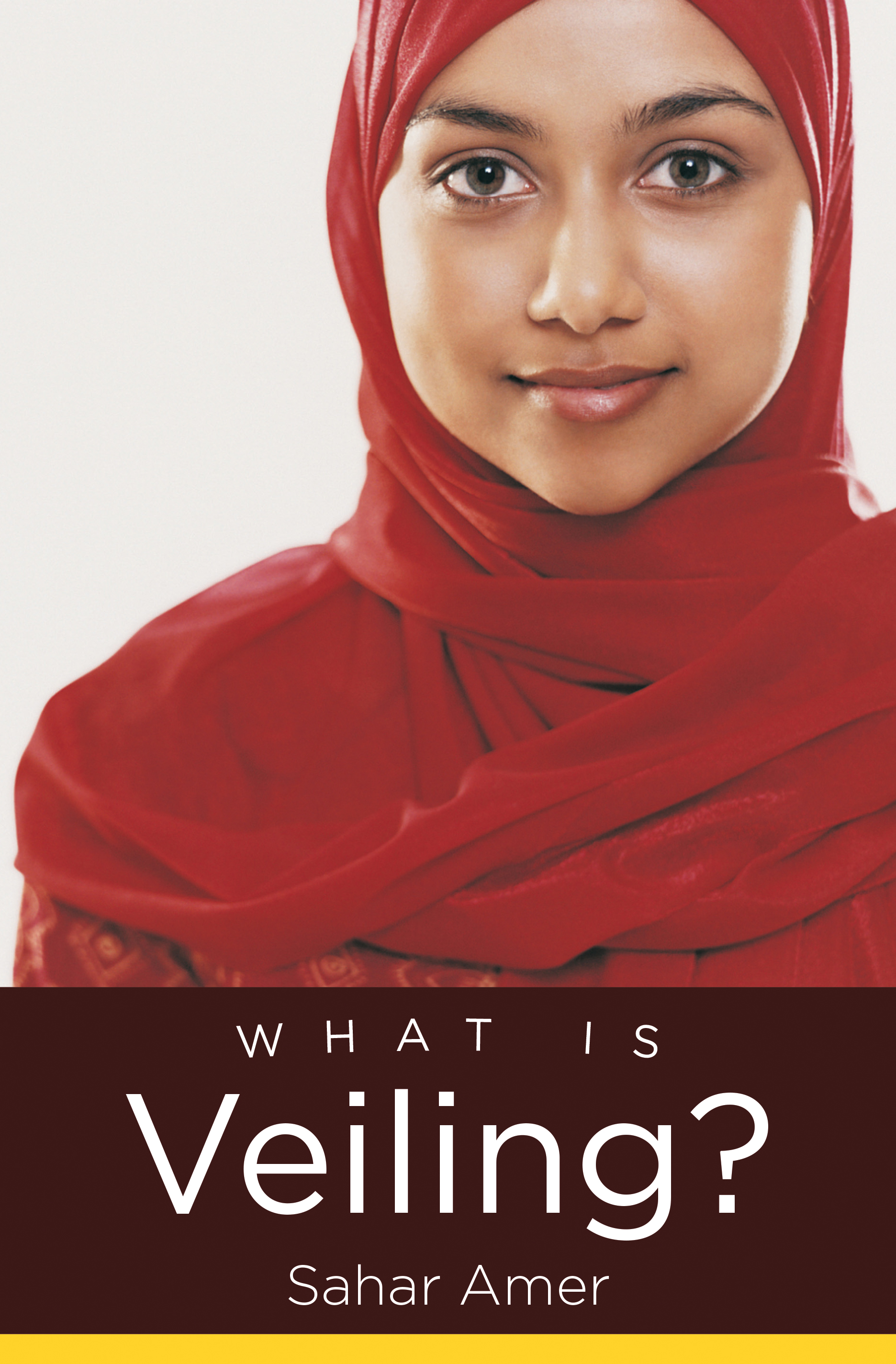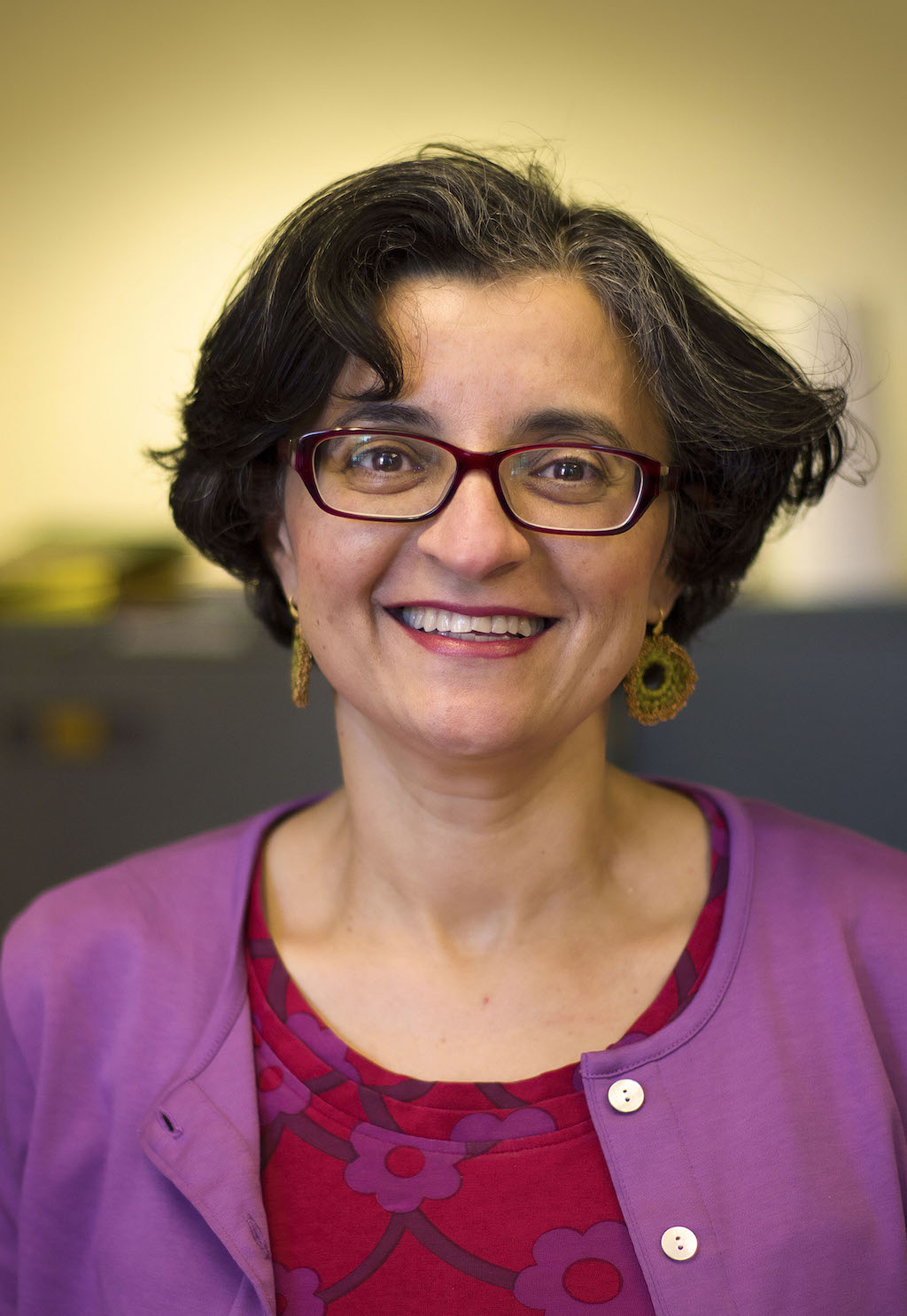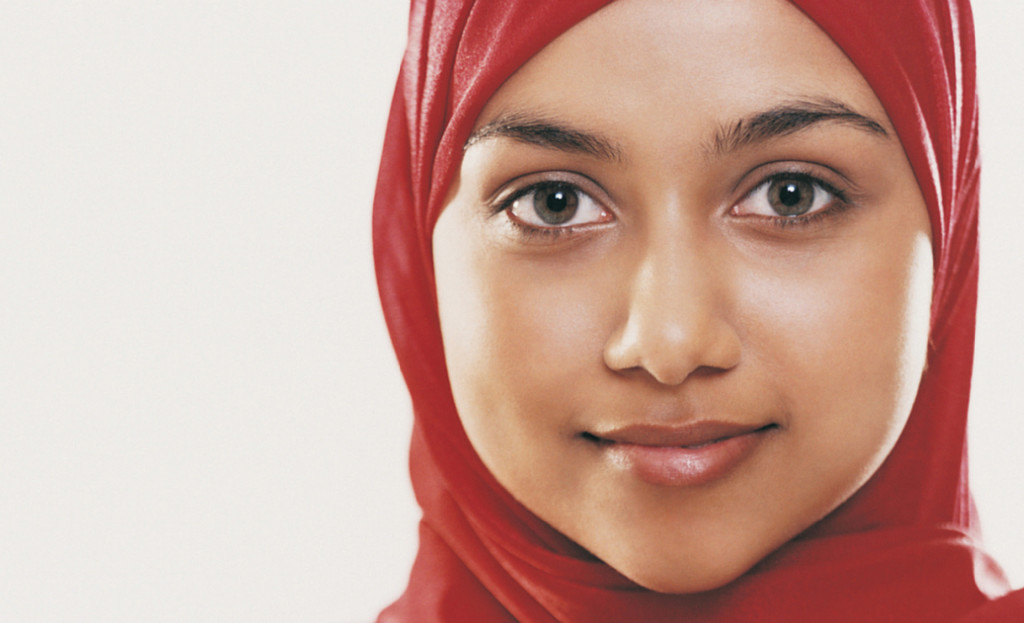
Excerpted from What is Veiling? by Sahar Amer
Piety and politics alone do not explain why an increasing number of Muslim women around the world have decided to veil since the late 1970s. New social and economic conditions in many Muslim-majority societies have also come into play and are partly responsible for the rise in veiling practices.
The number of Muslim women with college degrees has been steadily rising. Many of them are professionals, having entered the workforce in fields and occupations traditionally monopolized by men. Moreover, because of poor economic conditions among the middle and lower middle classes in all Muslim-majority societies, women have had to take on jobs outside the home to help support their families.
These conditions have created an entirely new situation in which Muslim men and women have to work side by side in public spaces traditionally gendered masculine. Some modifications have thus had to be introduced to accommodate the growing number of women coming into regular contact with men outside of their families.
Many Muslim women resorted to hijab for the protection they felt they needed to circulate comfortably in public and hold jobs alongside men.
The hijab allows some Muslim women to maintain a public image of respectability, to dissociate themselves from prevailing assumptions about modern (European or American) women—such as that they are sexually and morally loose.
The new veiling thus allows some conservative women to maintain traditional gender segregation while observing various local conventions of modesty and community customs when interacting in public, non-segregated environments. It allows them to be modest and maintain a personal subjective space while actively fulfilling their civic, social, and individual responsibilities.
The hijab allows some Muslim women to maintain a public image of respectability, to dissociate themselves from prevailing assumptions about modern (European or American) women—such as that they are sexually and morally loose. Many Muslim women have told me that they have decided to veil to deflect unwanted flirtations and harassment from men on the streets. When they go about veiled, these women feel safer and less likely to be harassed, although this is certainly changing today.
Other women state that veiling gives them greater mobility, even allowing them to date without compromising their reputation. Because a veiled woman is often assumed to be morally conservative and chaste, she is less likely to be disparaged if she is unmarried and seen in public with an unrelated man. When veiled, a woman accompanied by a man is typically assumed to be in a legal relationship.

Sahar Amer, author of What Is Veiling?; photo by Elisha Walker
Thus veiling, far from confining women, as many non-Muslims might hastily assume, instead sometimes allows Muslim women to assert themselves as active individuals and citizens, to compete with men on equal terms in the workforce, and to exercise their human right to a satisfying public and personal life.
If veiling is on the rise in Muslim-majority societies today, and it certainly is, it is because for many the veil is a sign of and means to female autonomy.
Many Muslims around the world are eager to make known that the veil can be independently and willingly adopted by Muslim women. Reflecting this assertion of women’s agency, a linguistic shift has occurred in Egypt in the past two years, and a new term has been coined to refer to veiled women. It has been adopted by some specialty hijab shops as part of a new marketing strategy, and it is one gaining currency in some media outlets. Rather than cater to muhajjabat (covered women), some hijab specialty shops thus now use the related mutahajjibat (women who cover). Even though the form and style of the clothing sold is the same for both, the new term emphasizes women’s agency. The difference between mutahajjibat and muhajjabat is therefore the difference between the active and the passive adoption of hijab. Today’s Muslim women are the dynamic mutahajjibat—professional, independent, and self- assertive women who are active in society even as they appear to many non-Muslims as stereotypically conservative and passive.
We can therefore say that in contrast to the early wave of Middle Eastern feminists who called for shedding the veil, many Muslim feminists today see no contradiction between female equality and wearing hijab or even niqab. This is precisely why we increasingly see the re-adoption of veiling and modest dress that had all but disappeared forty years ago in cities. Though it appears counterintuitive, the increase in veiling practices is partly a result of the rise of Islamic feminism. Many Muslim women today are wearing hijab because they are pious feminists, not because they are oppressed or subjugated.
Sahar Amer is professor of Arabic and Islamic studies at the University of Sydney.
Copyright © 2014 by the University of North Carolina Press. Used by permission of the publisher.
Fi2W is supported by the David and Katherine Moore Family Foundation, the Ralph E. Odgen Foundation, and the Nicholas B. Ottaway Foundation.
AboutFeet in Two Worlds
Feet in 2 Worlds (Fi2W) is an independent media outlet, journalism training program, and launchpad for emerging immigrant journalists and media makers of color. Our work brings positive and meaningful change to America's newsrooms and has a broader impact on how immigration is reported and the ethnic and racial composition of news organizations.


Excerpted from What is Veiling? by Sahar Amer
Piety and politics alone do not explain why an increasing number of Muslim women around the world have decided to veil since the late 1970s. New social and economic conditions in many Muslim-majority societies have also come into play and are partly responsible for the rise in veiling practices.
The number of Muslim women with college degrees has been steadily rising. Many of them are professionals, having entered the workforce in fields and occupations traditionally monopolized by men. Moreover, because of poor economic conditions among the middle and lower middle classes in all Muslim-majority societies, women have had to take on jobs outside the home to help support their families.
These conditions have created an entirely new situation in which Muslim men and women have to work side by side in public spaces traditionally gendered masculine. Some modifications have thus had to be introduced to accommodate the growing number of women coming into regular contact with men outside of their families.
Many Muslim women resorted to hijab for the protection they felt they needed to circulate comfortably in public and hold jobs alongside men.
The hijab allows some Muslim women to maintain a public image of respectability, to dissociate themselves from prevailing assumptions about modern (European or American) women—such as that they are sexually and morally loose.
The new veiling thus allows some conservative women to maintain traditional gender segregation while observing various local conventions of modesty and community customs when interacting in public, non-segregated environments. It allows them to be modest and maintain a personal subjective space while actively fulfilling their civic, social, and individual responsibilities.
The hijab allows some Muslim women to maintain a public image of respectability, to dissociate themselves from prevailing assumptions about modern (European or American) women—such as that they are sexually and morally loose. Many Muslim women have told me that they have decided to veil to deflect unwanted flirtations and harassment from men on the streets. When they go about veiled, these women feel safer and less likely to be harassed, although this is certainly changing today.
Other women state that veiling gives them greater mobility, even allowing them to date without compromising their reputation. Because a veiled woman is often assumed to be morally conservative and chaste, she is less likely to be disparaged if she is unmarried and seen in public with an unrelated man. When veiled, a woman accompanied by a man is typically assumed to be in a legal relationship.
Sahar Amer, author of What Is Veiling?; photo by Elisha Walker
Thus veiling, far from confining women, as many non-Muslims might hastily assume, instead sometimes allows Muslim women to assert themselves as active individuals and citizens, to compete with men on equal terms in the workforce, and to exercise their human right to a satisfying public and personal life.
If veiling is on the rise in Muslim-majority societies today, and it certainly is, it is because for many the veil is a sign of and means to female autonomy.
Many Muslims around the world are eager to make known that the veil can be independently and willingly adopted by Muslim women. Reflecting this assertion of women’s agency, a linguistic shift has occurred in Egypt in the past two years, and a new term has been coined to refer to veiled women. It has been adopted by some specialty hijab shops as part of a new marketing strategy, and it is one gaining currency in some media outlets. Rather than cater to muhajjabat (covered women), some hijab specialty shops thus now use the related mutahajjibat (women who cover). Even though the form and style of the clothing sold is the same for both, the new term emphasizes women’s agency. The difference between mutahajjibat and muhajjabat is therefore the difference between the active and the passive adoption of hijab. Today’s Muslim women are the dynamic mutahajjibat—professional, independent, and self- assertive women who are active in society even as they appear to many non-Muslims as stereotypically conservative and passive.
We can therefore say that in contrast to the early wave of Middle Eastern feminists who called for shedding the veil, many Muslim feminists today see no contradiction between female equality and wearing hijab or even niqab. This is precisely why we increasingly see the re-adoption of veiling and modest dress that had all but disappeared forty years ago in cities. Though it appears counterintuitive, the increase in veiling practices is partly a result of the rise of Islamic feminism. Many Muslim women today are wearing hijab because they are pious feminists, not because they are oppressed or subjugated.
Sahar Amer is professor of Arabic and Islamic studies at the University of Sydney.
Copyright © 2014 by the University of North Carolina Press. Used by permission of the publisher.
Fi2W is supported by the David and Katherine Moore Family Foundation, the Ralph E. Odgen Foundation, and the Nicholas B. Ottaway Foundation.
AboutFeet in Two Worlds